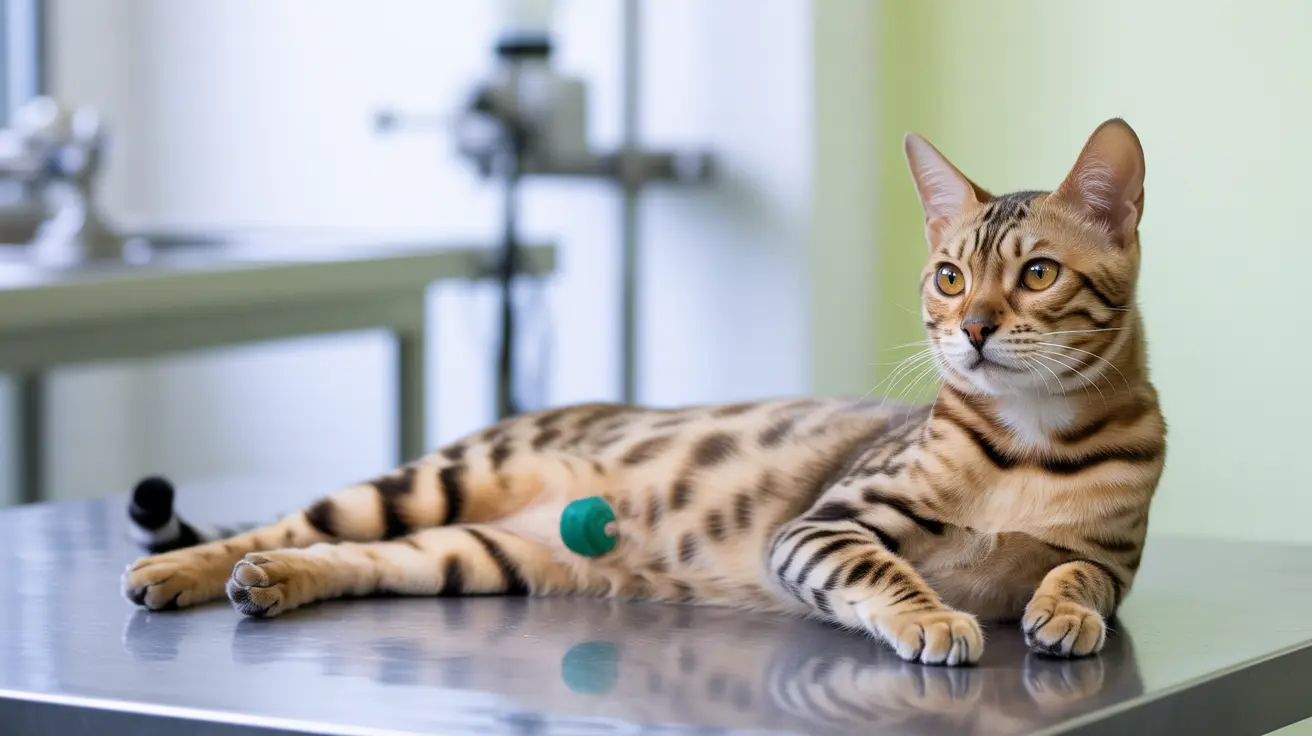What is a Male Cat Neuter Tattoo?
A male cat neuter tattoo is a permanent marking applied during the neutering surgery that serves as a clear, visual indicator that a cat has been surgically sterilized. This small green linear tattoo has become an increasingly important tool in veterinary medicine and animal welfare.
The practice, recommended by the Association of Shelter Veterinarians since 2010, helps prevent unnecessary exploratory surgeries and provides instant verification of a cat's neutered status, especially important since male cats don't have visible surgical scars like females do.
The Importance of Neuter Tattoos
Male cat neuter tattoos serve multiple crucial purposes in veterinary care and animal welfare. They prevent unnecessary repeated surgeries, reduce stress on animals, and save time and resources in veterinary settings. This is particularly valuable for community cats or pets who might change homes throughout their lives.
For male cats specifically, these tattoos are essential because, unlike female cats who have visible spay scars, there's no obvious external indication of their altered status without this marking.
The Tattoo Procedure and Placement
During the neutering surgery, veterinarians create a small, shallow incision (approximately 1 cm) in the lower abdomen area. They then apply a special green veterinary ink paste and seal it with surgical glue. The placement is strategically chosen to be near where a spay incision would be on a female cat, making it easy for veterinary professionals to check for sterilization status regardless of gender.
The procedure is performed while the cat is still under anesthesia from the neutering surgery, ensuring no additional discomfort for the animal. The green ink used is specifically designed for veterinary use and creates a permanent mark that won't fade over time.
Post-Procedure Care and Healing
After the tattoo application, the area is typically covered with a small amount of surgical glue to prevent the ink from spreading and to protect the site during healing. Most cats recover quickly, with the tattoo area healing alongside the neutering incision.
Owners should monitor the site daily for signs of infection or irritation, though complications are rare. If the cat shows interest in licking or scratching the area, an E-collar may be recommended for 7-10 days post-surgery.
Benefits for Pet Parents and Veterinarians
The neuter tattoo provides peace of mind for pet owners, knowing their cat's altered status can be easily verified. For veterinarians and shelter staff, it eliminates the need for exploratory surgery or ultrasound to determine if a male cat has been neutered, saving time, money, and reducing surgical risks.
This simple marking system has become particularly valuable in shelter environments and TNR (Trap-Neuter-Return) programs, where quick identification of altered animals is crucial for efficient operation.
Frequently Asked Questions
What is a male cat neuter tattoo and why is it important?
A male cat neuter tattoo is a small green line tattooed on the cat's lower abdomen during neutering surgery. It's important because it provides a permanent, visible indicator that the cat has been neutered, preventing unnecessary exploratory surgeries and confusion about the cat's reproductive status.
Where is the neuter tattoo applied on a male cat and what does it look like?
The tattoo is applied on the lower abdomen, near where a spay incision would be on a female cat. It appears as a small green line, typically about 1 cm in length, and remains visible even after the fur grows back.
How should I care for my male cat's neuter tattoo after surgery?
Monitor the site daily for signs of infection, avoid applying any creams unless prescribed by your vet, and use an E-collar if your cat attempts to lick or scratch the area. The tattoo will heal alongside the neutering incision within 7-14 days.
Can neuter tattoos prevent my cat from undergoing unnecessary surgeries?
Yes, neuter tattoos are specifically designed to prevent unnecessary exploratory surgeries by providing clear visual proof that a cat has been neutered, especially important in shelter environments or if a cat changes owners.
Are there any common side effects or discomforts associated with male cat neuter tattoos?
Side effects are minimal and rare. Some cats may experience temporary irritation or itching at the tattoo site, usually related to the surgical glue used. These symptoms typically resolve on their own during the healing process.






